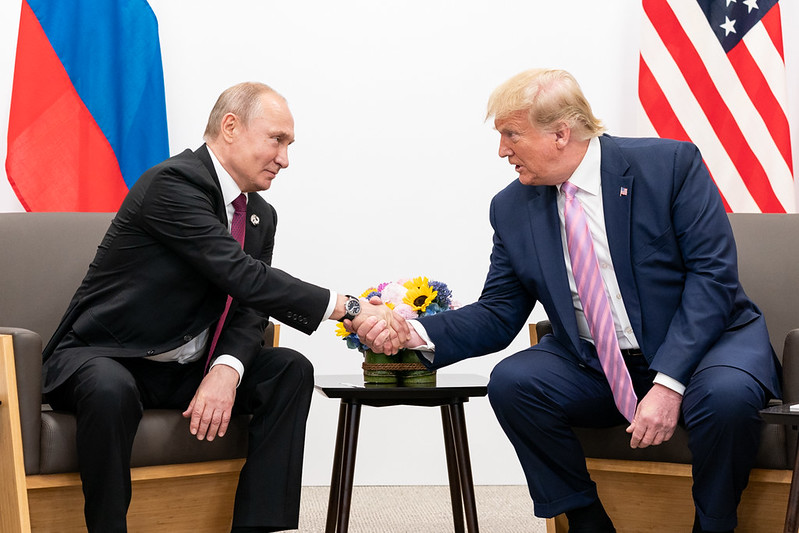
President Donald J. Trump participates in a bilateral meeting with the President of the Russian Federation Vladimir Putin during the G20 Japan Summit Friday, June 28, 2019, in Osaka, Japan. (Official White House Photo by Shealah Craighead)
At The Spectator, James Hanson suggests that Donald Trump could cripple Russia if it doesn’t agree to a peace deal. He writes:
There was surprisingly little in Donald Trump’s inaugural address about Russia and Ukraine, aside from a vague pledge to “stop all wars.” There was certainly no repeat of his campaign trail promise to end the conflict within twenty-four hours of taking office.
But, while answering reporters’ questions in the Oval Office as he signed a flurry of executive orders, Trump did comment on Zelensky and Putin — the two men he wants to bring to the negotiating table. “Zelensky wants to make a deal,” said Trump. He “didn’t know” if Putin does too, but “he should.” And then the returning president said something far more revealing: he claimed Putin was “destroying Russia” by not agreeing to a peace deal and that the country’s economy is in “big trouble.” It’s this last comment that should ring the loudest alarm bells in the Kremlin. Has Trump seized on the fact that Russia’s increasingly fragile economy is the soft underbelly of Putin’s war effort?
Since 2022, the Russian economy has effectively been on a war-time footing. After an initial drop in GDP, caused largely by western sanctions, military spending has driven the country’s growth. Its deficit has remained small thanks to oil revenues, with Putin’s “shadow fleet” able to avoid western oil embargos and price caps.
And yet, as Trump correctly noted, the economics of Russia’s war effort risk disaster for Putin. The Ruble ended 2024 at 110 against the dollar — the same level the currency fell to in the immediate aftermath of the full-scale invasion of Ukraine in 2022. Inflation is on the rise again, up to almost 10 percent, and Putin’s manpower shortage means he is offering increasingly generous financial incentives for those willing to join his armed forces. Elvira Nabiullina, the head of Russia’s Central Bank, is believed to be sounding the alarm in Moscow about the economic sustainability of the war.
For the time being, the only thing propping up the Russian economy is oil revenues. Which raises the question: what if Trump really does deliver on his promise to unleash the full potential of American oil? It’s hardly rocket science: if US oil production increases the overall global supply, demand — and international prices — will fall. Not only will that be welcome news for ordinary Americans still feeling the pinch, it will quickly leave Putin’s coffers running dry. Ukraine’s western allies have a combined domestic product of around 40 trillion dollars. Russia’s economy is more than twenty times smaller. If the West wants to cripple the Russian economy, it can. The reason it hasn’t so far is that some of the solutions, including ramping up production of fossil fuels, have remained politically unpalatable for certain leaders — notably, Joe Biden who has prioritized green energy. Trump has no such qualms. Even though he is in no way a natural ally of Ukraine, his plan to “drill, baby, drill” may be his biggest gift to Kyiv.
This, in turn, may allow Trump to ease up on US military aid for Ukraine. Ever the deal-maker, the president believes that America gets a bad deal out of its financial support for Zelensky’s government. This is naive on Trump’s part, as the billions of dollars of military aid spent by the US government is invested into American arms companies, who then export the weapons to Ukraine. Nonetheless, it is clear that Trump struggles to see what the US gets out of funding the security of a faraway nation in Eastern Europe.
Read more here.
If you’re willing to fight for Main Street America, click here to sign up for my free weekly email.




